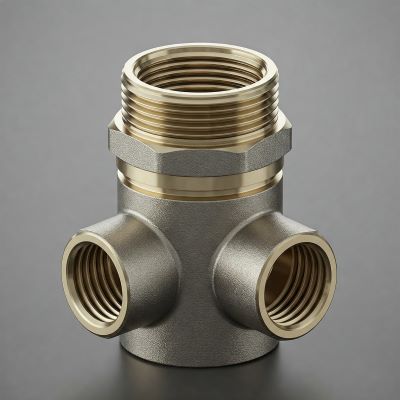Inverted flare fittings are a common type of connection used in various industries, particularly in automotive and hydraulic systems. They provide a reliable and leak-proof seal, making them essential for ensuring the safe and efficient operation of many fluid transfer applications.
This blog post will delve deeper into the intricacies of these fittings, focusing specifically on the unique inverted flare profile that enables their exceptional performance.
Understanding the Inverted Flare Profile
The inverted flare profile is a distinctive feature that sets these fittings apart from other connection types. Unlike compression fittings that rely on external forces to create a seal, inverted flare fittings utilize a unique geometry to achieve a secure and reliable connection.
What is an Inverted Flare Profile?
The inverted flare profile is characterized by a specific angle and shape of the flared end of the tubing. When the flared tube is inserted into the fitting, the flare contacts the internal surface of the fitting, creating a metal-to-metal seal. This direct contact between the two metal surfaces eliminates the need for gaskets or other sealing materials.
How it Differs from Other Fitting Types
Compared to other fitting types like compression fittings or threaded connections, inverted flare fittings offer several advantages:
➡️ Enhanced Leak Resistance: The metal-to-metal seal provides superior leak resistance, even under high pressure and vibration conditions.
➡️ Vibration Resistance: The tight, secure fit minimizes the risk of leaks caused by vibration, a common issue in many applications.
➡️ Reusability: Inverted flare fittings can be disassembled and reassembled multiple times without compromising the seal integrity.
The Anatomy of an Inverted Flare Fitting
A typical inverted flare fitting consists of several key components:
➡️ The Fitting Body: This is the main housing of the fitting, which typically includes threads for connection to other components.
➡️ The Flare Nut: This nut is threaded onto the fitting body and is used to secure the flared tube in place.
➡️ The Flared Tube: This is the tube that is connected to the fitting. The end of the tube is flared at a specific angle to create the seal.
The Importance of Flare Angle and Diameter:
The flare angle and diameter are critical dimensions that must be precisely matched to ensure a proper seal. An incorrect flare angle or diameter can result in leaks, damage to the fitting, or even system failure.
How Inverted Flare Fittings Create a Seal
The process of assembling an inverted flare fitting involves:
1. Preparing the Tube: The tube is cut to the desired length and then flared using a specialized flaring tool. The flaring tool creates the inverted cone shape at the end of the tube.
2. Inserting the Tube: The flared end of the tube is inserted into the fitting body.
3. Tightening the Nut: The flare nut is then tightened onto the fitting body, drawing the flared tube into the fitting. As the nut is tightened, the flare of the tube is compressed against the internal surface of the fitting, creating a tight metal-to-metal seal.
Proper Torque and Lubrication:
Applying the correct torque to the flare nut is crucial for achieving a proper seal. Overtightening can damage the fitting or the tube, while undertightening can lead to leaks. Applying a small amount of thread lubricant to the threads of the flare nut can help ensure a smooth and even tightening process.
Advantages of Using Inverted Flare Fittings
Inverted flare fittings offer several advantages over other types of fittings:
➡️ Reliability: The metal-to-metal seal provides exceptional reliability and leak resistance.
➡️ Versatility: They can be used in a wide range of applications, including automotive, hydraulic, and pneumatic systems.
➡️ Reusability: They can be disassembled and reassembled multiple times without compromising the seal.
➡️ Cost-Effectiveness: They are generally more cost-effective than other types of fittings.
Common Applications of Inverted Flare Fittings
Inverted flare fittings are widely used in various industries, including:
➡️ Automotive: Brake lines, fuel lines, power steering lines
➡️ Hydraulic Systems: Industrial machinery, construction equipment
➡️ Pneumatic Systems: Air brake systems, pneumatic tools
Conclusion
Inverted flare fittings are a reliable and versatile solution for a wide range of fluid transfer applications. Understanding the unique inverted flare profile and the principles of assembly is essential for ensuring proper installation and optimal performance. By following best practices and using high-quality components, you can ensure leak-free and reliable operation of your systems.
Have you had any experience working with inverted flare fittings? Reach out to us and share your thoughts and experiences. And don’t forget to subscribe to our blog for more informative content on a variety of topics related to fluid power and industrial applications.
Post time: Jan-27-2025


